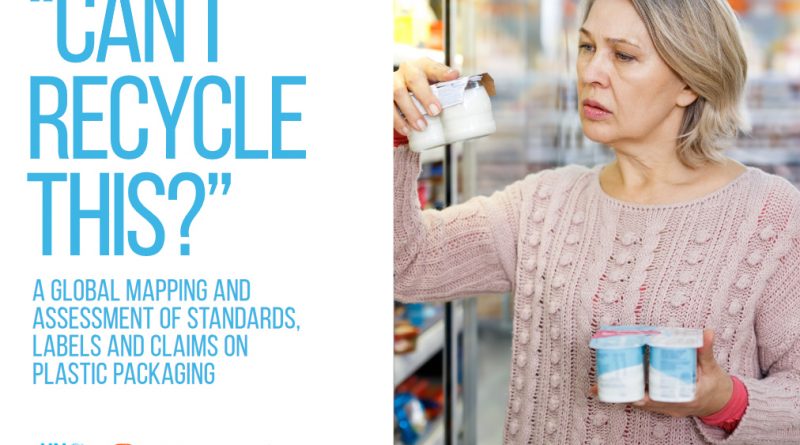Report: Plastic recycling labelling confusing and inconsistent
A global assessment of recycling and sustainability labelling on plastic packaging has found only 17% of assessed labels give consumers quality information to make informed recycling and purchasing decisions.
The research from the UN Environment Programme, Consumers International and the One Planet network found that 20% of the 30 worldwide labels assessed were given a negative score by consulted experts, 17% were positive with the rest receiving mixed or neutral results.
In response the report authors have created five global recommendations for action to engage business, policy makers and standard setters in creating better plastics labelling with the aim to make sustainability the easy choice for consumers.
Consumers are increasingly aware of the impact of plastic on the environment and want to reduce their use. However, the information provided to them is often unclear, leading to reported confusion and mistrust. There is a lack of standardisation and accountability with individual brands creating their own labels and claims without third party certification.
Globally, only about 9% of plastic waste has been recycled and about 12% has been incinerated. The vast majority ends up in landfill or leaks into the environment. This is far away from the global vision for plastics to be 100% reusable, recyclable or compostable. Rising public awareness and concern about plastics has encouraged businesses to increasingly communicate this information about their packaging. However, the information is not always clear or actionable for consumers.
A global, multi-faceted, multi-stakeholder approach is the only way to tackle a crisis on this scale. Better plastics labelling is a simple and powerful way to help consumers to buy more recyclable and recycled products and to dispose of them correctly.
Report authors, UN Environment Programme and Consumers International are now taking forward the report’s recommendations on plastics labelling. They will be working, with key strategic partners, to enact the five global recommendations for action:
1. Businesses following the Guidelines for Providing Product Sustainability Information in their plastic packaging communications.
2. Global consistency when it comes to definitions relating to the content and reusability of packaging or disposable items.
3. The definitions and technical requirements used in standards related to recyclability, compostability, and biodegradability should better reflect real world conditions and be more attentive to accessibility and consumer understanding.
4. The use of the ‘chasing arrows’ symbol should be restricted to indicating recyclability.
5. Informative and verified recycling labels should be adopted and their proper use enforced.
Helena Leurent, Director General, Consumers International, said: “As the world rebuilds after COVID-19, we must focus on rebuilding our economy but doing it in a way that meets the Sustainable Development Goals. We have a unique opportunity to change and rebuild systems to work for people, business and the planet. To accelerate sustainable solutions to the world’s biggest challenges we need to bring together dedicated, innovative and ambitious people across all areas of the plastics infrastructure.
The research also found a confusing use of the chasing arrows symbol associated with recycling. There is no standard practice for its use and brands can use the symbol for any meaning.
An example of this is the Green Dot label. The design of this label is reminiscent of the universal recycling symbol, but does not indicate recyclable, instead it means the brand has paid into a scheme which recovers, sorts and recycles sales packaging in the EU. A valid and useful scheme but the symbol is confusing for consumers who could mistake it for recycling information.
During the expert consultation, labels that inform about compostability and biodegradability emerged as the most problematic. While research suggests consumers prefer packaging that is compostable or biodegradable, access to industrial composting facilities is very limited and consumers are confused about how to dispose of these items. Therefore, these materials are often contaminating garden waste streams and recycling streams, simply going into household waste or in the worst case, littered into the environment.

